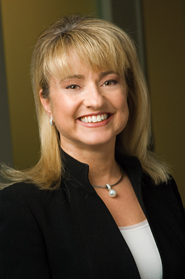Transaction cost analysis is moving beyond its compliance roots, and institutions are using TCA more and more to scrutinize their brokers, a new study finds.

Almost 40 percent of institutional investors now use transaction cost analysis to assess broker performance on internal trading desks, according to a new report by Greenwich Associates.
TCA was originally developed as a compliance tool, and 35 percent of institutions in the Greenwich survey reported their compliance departments use TCA systems to ensure best execution. However, firms are also branching out, using the tool for other purposes as well, the study found.
According to Greenwich, 38 percent of institutions employ TCA to identify outlier or problem trades and 37 percent use it to measure active trading results against a benchmark.
Jennifer Litwin, director of institutional marketing for Greenwich, said that in past years institutions considered compliance to be the primary role of TCA. Now, however, they are starting to view these systems as something more than mere “check-the-box” compliance tools.
“That’s not to say that there isn’t still a big use by compliance—there certainly is,” Litwin said. “But one of the things we found is, there are multiple uses.”
The responsibility for the TCA process is also moving away from compliance departments and landing on the trading desk. About three quarters of institutional equity traders reported their trading desks now have the main responsibility for handling TCA.

Two thirds of institutional equity traders said they receive client requests for their TCA results, indicating investors see a definite value to analyzing transaction costs.
Perhaps more sharply affecting traders, about 30 percent of institutions use TCA to determine some portion of their traders’ compensation.
Using TCA to determine compensation remains controversial. Several study participants complained TCA forces traders to aim for being average and applies a mathematical formula to what some consider an art form.
“People who are not traders do not truly understand the process of trading,” one respondent told Greenwich. “Trading is an extremely difficult job and one in which it is amazingly easy to Monday-morning quarterback.”
Kevin Kozlowski, an analyst at Greenwich Associates who oversees product development in securities and trading, said the whole issue of TSA is very polarizing within the trading community.
“There’s no one in the middle,” Kozlowski said. “You either hate it, and think it’s atrocious, or you think it’s a great tool. It all depends on the angle you take.”
Based on the comments Greenwich has seen, there is a growing population that understands TCA better than in the past, and though not all traders may like it, Kozlowski said acceptance is growing.
ITG’s Plexus remains the dominant player in the TCA space. It is used by 56 percent of institutions that have a third-party TCA vendor, Greenwich found. Abel/Noser’s Ancerno and Bloomberg’s BTCA came in second and third, respectively.
While some firms use their own proprietary TCA systems, building a whole platform from scratch can be expensive. Litwin said many prefer to use a vendor, even if they also build parts of their systems themselves.
“It seems a lot of people use both proprietary and a vendor,” she said. “Maybe certain aspects of one work better than the other, but I don’t think they necessarily rely on just one.”




